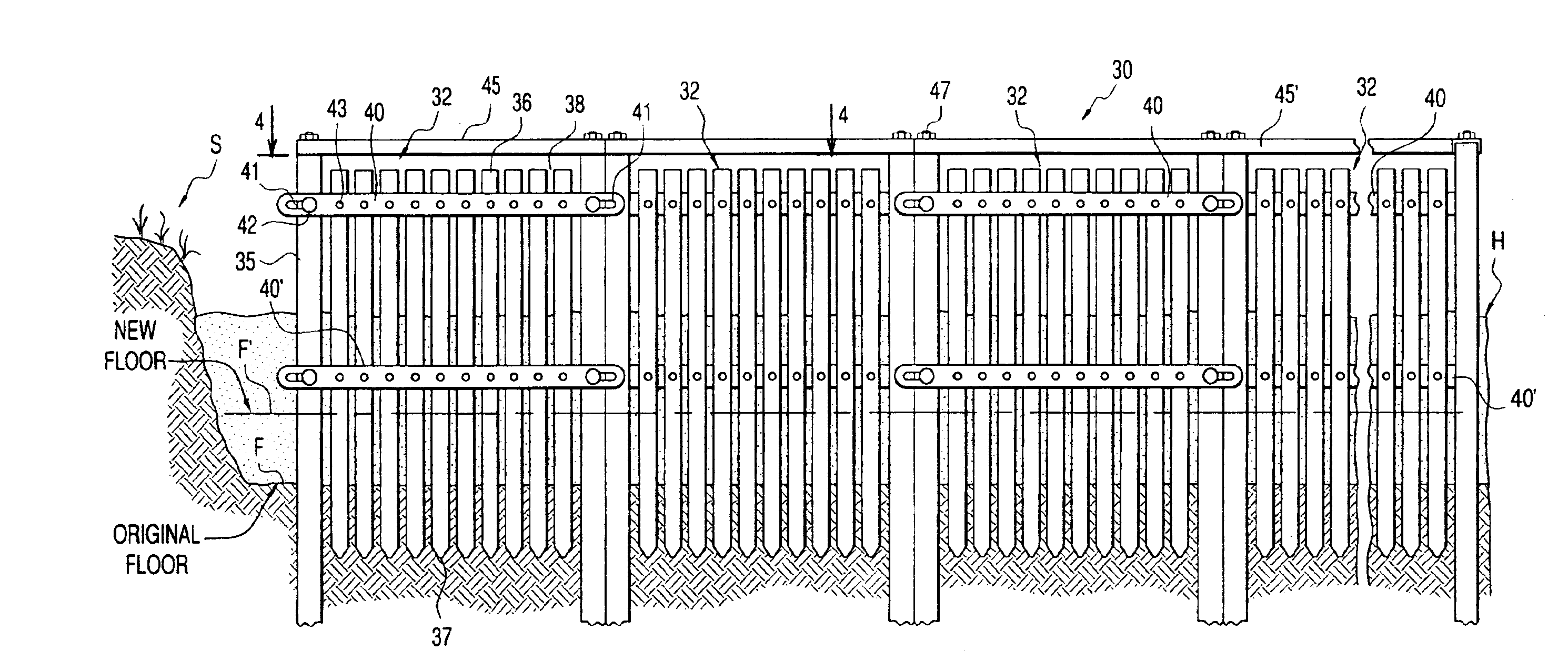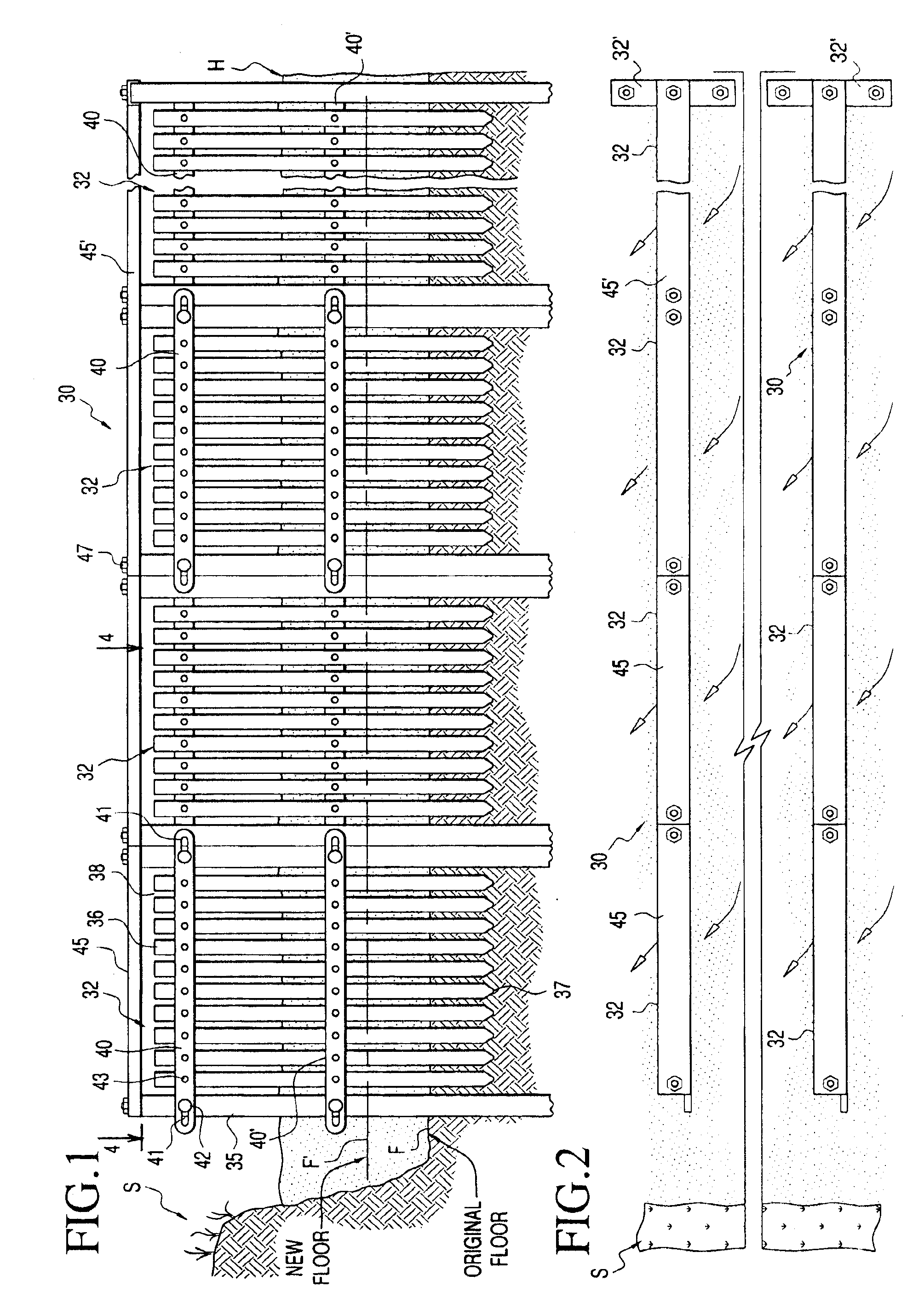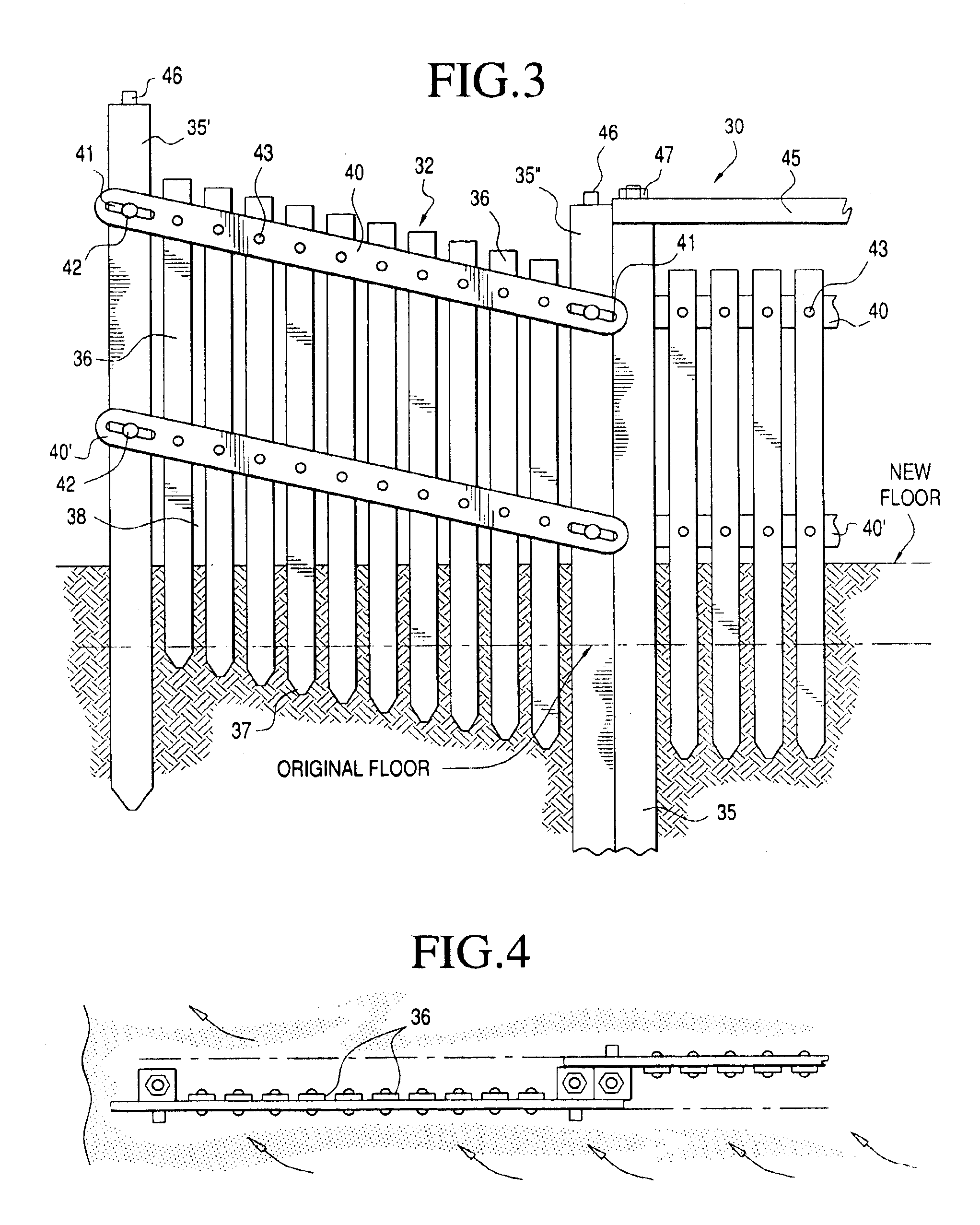Permanent and semi-permanent groyne structures and method for shoreline and land mass reclamation
a groyne structure, permanent and semi-permanent technology, applied in the direction of groynes, piers, agriculture tools and machines, etc., can solve the problems of only practicality, personal and economic loss, and adversely affect the general public,
- Summary
- Abstract
- Description
- Claims
- Application Information
AI Technical Summary
Benefits of technology
Problems solved by technology
Method used
Image
Examples
first embodiment
[0060]With continued reference to drawing figures, groyne 30 is shown as being deployed along shoreline “S” of a gulf, ocean, lake, river or the like such that the structure extends along the shoreline to off shore with the height of the structure being such that it extends generally above a high water line “H”. The groyne structure is designed to be permanent or semi-permanent however, when environmental or other conditions require, the groyne may also be readily elevated or removed or adjusted so as to not adversely affect movement of aquatic life.
[0061]The groyne 30 includes a plurality of groyne sections or units 32 which are positioned generally in alignment with one another extending from the shoreline to offshore. The alignment with respect to the shore may be substantially perpendicular, as shown in FIG. 2 wherein two groyne structures are shown as being in generally parallel relationship with respect to one another. As opposed to extending perpendicularly from the shoreline...
second embodiment
[0078]With specific reference to FIGS. 5 through 9, the invention is disclosed in greater detail. In this embodiment, groyne 50 is shown as including a plurality of groyne sections 52 which are interconnected with one another to form an extended groyne extending outwardly from the shoreline. As with the previous embodiment, shorter groyne sections 52′ may be provided generally perpendicularly thereto at the outer end of the groyne structure to provide a breakwater. In this embodiment, a plurality of stanchions 55 are provided in spaced relationship with respect to one another along the length of the groyne as shown in FIG. 3. Although the groyne sections 52 may be formed in the same general manner as the embodiment of FIG. 1 wherein each section includes opposite end stanchions, the separate sections may be somewhat integrally formed such that there are no intermediate pairs of stanchions along the length of the groyne. Intermediate each of the stanchions 55 are a plurality or set o...
PUM
 Login to View More
Login to View More Abstract
Description
Claims
Application Information
 Login to View More
Login to View More - R&D
- Intellectual Property
- Life Sciences
- Materials
- Tech Scout
- Unparalleled Data Quality
- Higher Quality Content
- 60% Fewer Hallucinations
Browse by: Latest US Patents, China's latest patents, Technical Efficacy Thesaurus, Application Domain, Technology Topic, Popular Technical Reports.
© 2025 PatSnap. All rights reserved.Legal|Privacy policy|Modern Slavery Act Transparency Statement|Sitemap|About US| Contact US: help@patsnap.com



